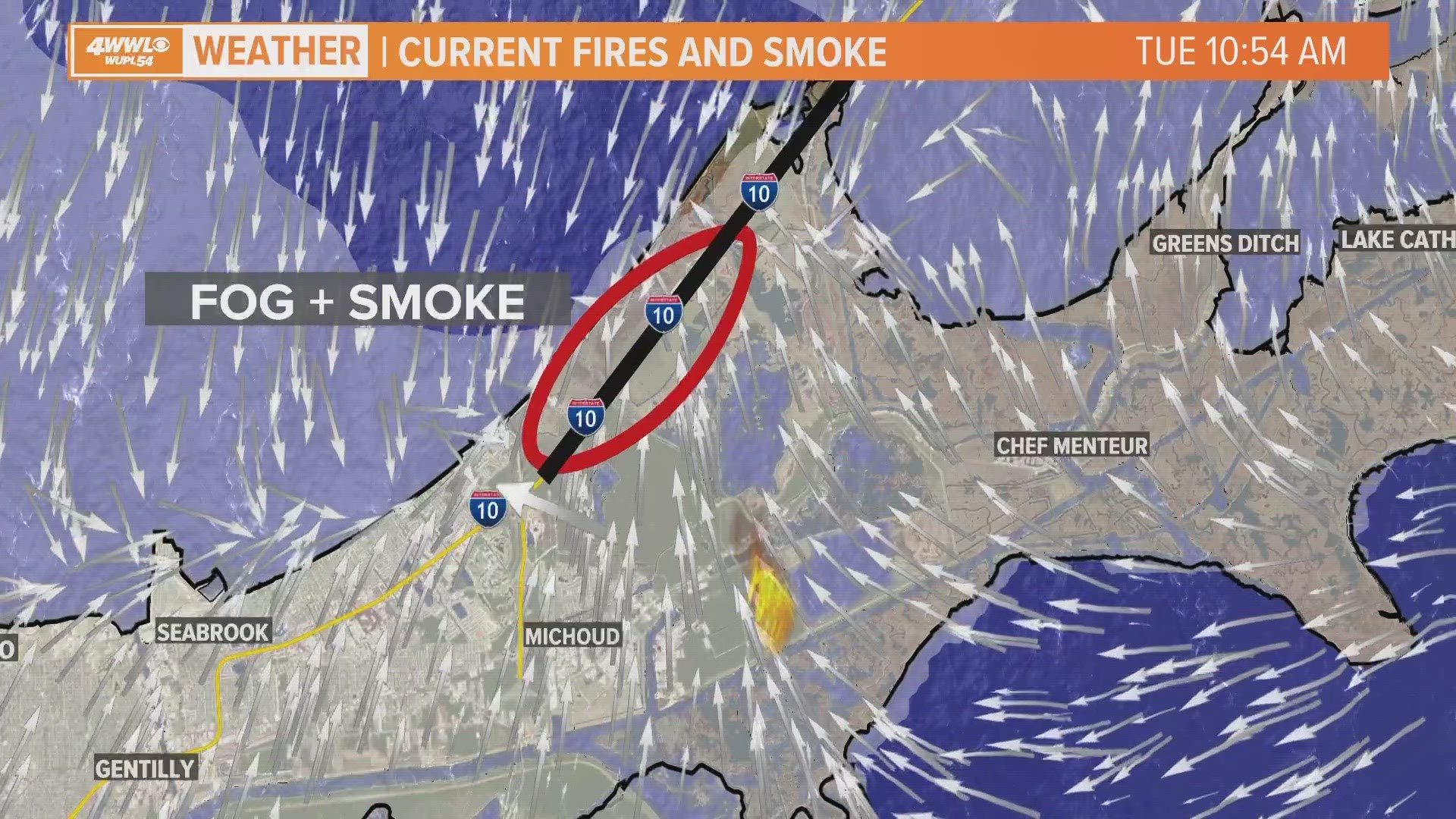NEW ORLEANS — New Orleans Fire Department Chief Roman Nelson along with City of New Orleans officials with Homeland Security and the New Orleans Sewerage and Water Board detailed their ongoing plan to combat a difficult marsh fire.
Fighting the fire is a multi-agency endeavor with NOFD, Wildlife and Fisheries, Sewerage and Water Board, and Department of Homeland Security all involved.
NOFD Chief Nelson says the fire which has been burning underground for weeks, is on a remote private property that is difficult to access.
“The difficulty with this property is the limited access. And so, we've heard or seen a lot of different comments about well, what does that mean is the property owner limited access? What does limited access mean when we say limited access? What we mean is this property is remotely located,” Nelson said.
“There's no fire hydrant service to that area. The property is bounded by pipelines on either side with natural gas and one with fuel, there's a railroad on another side and three sides of the property are bounded by canals.”
He also says they can’t use heavy machinery to clear the land because crossing over the pipeline could damage it.
“But we have to be careful about how much weight can cross those pipelines. The area is inaccessible to fire trucks, we can't get them in there and get them out without getting off the gravel road. And so, we don't want to get our fire trucks stuck back there,” Nelson said.
Chief Nelson says the plan is to flood the land with water by using seven water pumps pumping 21,000 gallons of water per minute with water supplied by the New Orleans Sewerage and Water Board.
The NOFD chief also says using helicopters to drop water on the fire would be ineffective because the fire is made up of decaying Peat and vegetation burning underground like coal.
“That's what's burning down there. It's incredibly difficult to get to Chief Nelson mentioned, the Bambi buckets, the water drops, that's 400 gallons of water per drop, we're talking about 3000 gallons of water per minute per pump,” said Colin Arnold, Director of Homeland Security Emergency Preparedness for the city of New Orleans.
“So, if the flooding of this, with seven pumps or more depending on how many we can get, if that's not going to have the impact, certainly any type of aerial from what we're being told by both state and federal authorities that is not going to have an impact on this.”
Director Arnold also talked about concerns over air quality and said the Louisiana Department of Environmental Quality placed air quality monitoring stations in the area around the fire.
“We are observing moderate air quality conditions, particularly in the mornings up until around noon,” he said.
“We want people to make sure they understand moderate air quality, you can still conduct outdoor activities, but it is getting to a level where when it's moderate, that those with pre-existing medical conditions, the elderly, and the young and pregnant women should always heed caution. And when they're outdoors, particularly if they smell smoke. We've heard the smoke described, as you know, that it stinks, that it's toxic. We know of no toxic issues from this.”
The New Orleans East marsh fire is currently one of three fires burning in the metro area which has led to at least two major fatal crashes on the interstate due to poor visibility from the smoke and morning fog.
► Get breaking news from your neighborhood delivered directly to you by downloading the new FREE WWL-TV News app now in the IOS App Store or Google Play.

